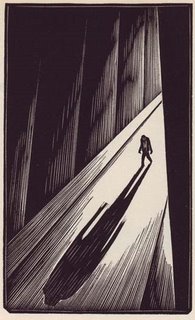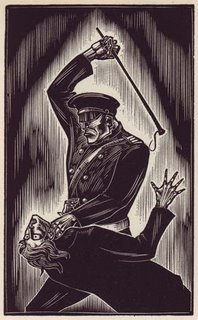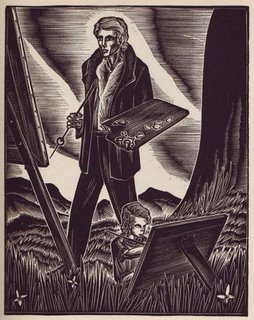Lynd Ward's first woodcut novel, "God's Man", was published in 1929

 It tells the story of a youn artist wh
It tells the story of a youn artist wh o goes to the big city in search of fame and fortune. He meets a dark man in a tavern, who gives him a magic brush. This brush was owned by all the greatest artists in history, and it was this brush which painted all their masterpieces. The boy signs a contract and soon he is a sensational success as an artist.
o goes to the big city in search of fame and fortune. He meets a dark man in a tavern, who gives him a magic brush. This brush was owned by all the greatest artists in history, and it was this brush which painted all their masterpieces. The boy signs a contract and soon he is a sensational success as an artist. But he soon finds that the city is corrupt, everything is all about money - He sees the city's ugly underside -
But he soon finds that the city is corrupt, everything is all about money - He sees the city's ugly underside -He flees the city for a more natural life
 closer to nature
closer to natureHe starts a new life, creating art for his new family -
One day the dark man shows up - Well you can guess what happens next - Beware of the magic brush! (or the magic pencil, stylus or whatever!)
The plot may be predictible and the characters one dimensional but Ward's graphics are incredibly powerful. He had studied in Germany in the '20s and was influenced by the Expressionist artists of the day. Franz Masereel had made several woodcut novels in Germany, and Ward was the first to do it in the US. The book was very popular, going through several printings - even inspiring Milt Gross' "He Done Her Wrong" (The Great American Novel and not a word in it - no music, too) Ward went on to make 4 more woodcut novels through the '30s. His plots got a little more sophisticated, with a "social conscience" typical of much depression-era art. Later, he illustrated novels and children's books. God's Man & his second, Madman's Drum, are available from Dover Press.




